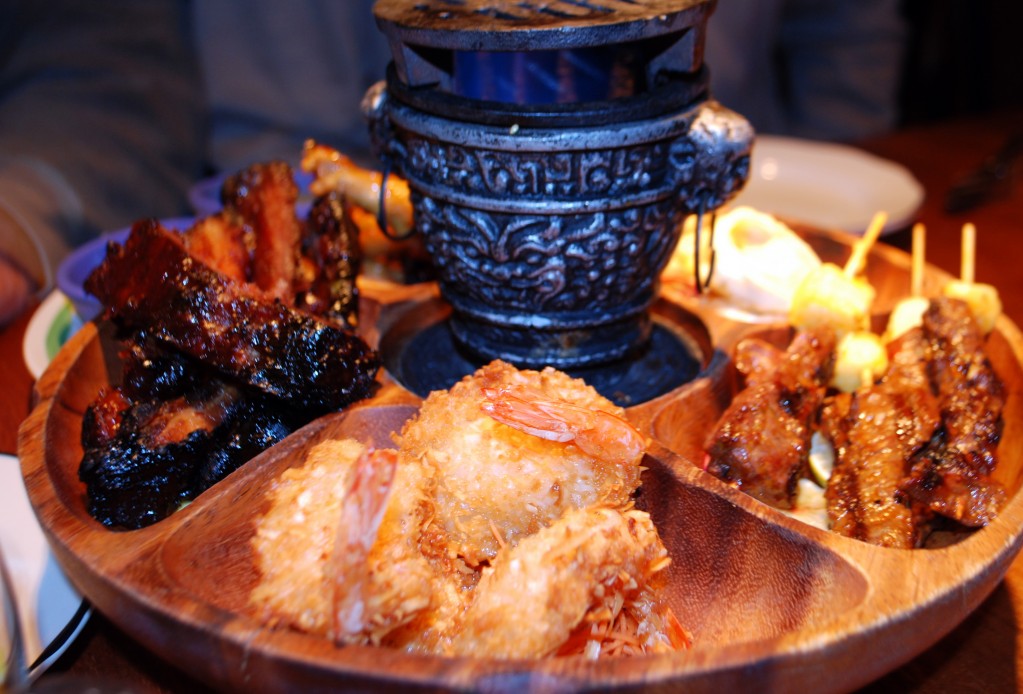Ultimate Guide To Pu Pu Platter: A Culinary Delight
Are you ready to explore the delicious world of Pu Pu Platter? This iconic dish has captivated the taste buds of many, combining an array of flavors and textures that make it a favorite among Asian cuisine lovers. Whether you're a seasoned foodie or a curious novice, this article delves deep into the history, ingredients, and preparation of Pu Pu Platter, ensuring that you have all the information you need to appreciate and perhaps recreate this delightful dish at home.
In this comprehensive guide, we will cover everything from the origins of Pu Pu Platter to its various components, serving suggestions, and nutritional information. You’ll also discover why this dish is not just a meal but an experience that brings people together. So, let's embark on this culinary journey and uncover the secrets behind one of the most beloved appetizers!
By the end of this article, you will not only have a thorough understanding of what a Pu Pu Platter is but also how to enjoy it to the fullest. Whether you’re planning a dinner party or just want to indulge in a comforting dish, this guide will serve as your go-to resource for all things Pu Pu Platter.
Table of Contents
- 1. History of Pu Pu Platter
- 2. Key Ingredients of Pu Pu Platter
- 3. How to Prepare Pu Pu Platter
- 4. Serving Suggestions
- 5. Nutritional Value of Pu Pu Platter
- 6. Variations of Pu Pu Platter
- 7. Popular Restaurants Serving Pu Pu Platter
- 8. Conclusion
1. History of Pu Pu Platter
The origins of Pu Pu Platter can be traced back to Chinese-American cuisine, which emerged in the mid-19th century. Initially, it was a way to offer a variety of dishes in one serving, making it ideal for sharing. The term "Pu Pu" is derived from the Chinese word for "to share" and reflects the communal spirit of dining.
Throughout the years, Pu Pu Platter has evolved, integrating various ingredients and cooking techniques. It gained popularity in the United States during the 1960s and has since become a staple in many Chinese restaurants. The dish typically features a mix of appetizers, including egg rolls, dumplings, and more, often served on a large platter, making it perfect for gatherings.
2. Key Ingredients of Pu Pu Platter
A traditional Pu Pu Platter includes a variety of ingredients that contribute to its rich flavors and textures. Here are some of the key components:
- Egg Rolls
- Potstickers or Dumplings
- Barbecue Pork
- Chicken Wings
- Beef Skewers
- Vegetable Spring Rolls
- Teriyaki Chicken
- Sweet and Sour Sauce
These ingredients can be customized based on personal preferences or dietary restrictions. The variety ensures that there is something for everyone on the platter!
3. How to Prepare Pu Pu Platter
Preparing a Pu Pu Platter at home can be a fun and rewarding experience. Here’s a step-by-step guide to creating your own:
Step 1: Gather Ingredients
Collect all the necessary ingredients based on the components you wish to include in your platter. Freshness is key, so try to source high-quality items.
Step 2: Cooking
Each ingredient may require different cooking methods. Here’s how to prepare some of the most common items:
- Egg Rolls: Deep fry until golden brown.
- Potstickers: Pan-fry then steam for a crispy texture.
- Barbecue Pork: Marinate and grill for a smoky flavor.
- Chicken Wings: Bake or fry with your favorite seasoning.
Step 3: Arrange on Platter
Once everything is cooked, arrange the items beautifully on a large serving platter. Garnish with fresh herbs or sesame seeds for an appealing presentation.
4. Serving Suggestions
Pu Pu Platter is best served with a variety of dipping sauces to enhance the flavors. Here are some popular options:
- Sweet and Sour Sauce
- Soy Sauce
- Chili Oil
- Peanut Sauce
Additionally, consider serving your platter with a side of fried rice or noodles to make it a complete meal.
5. Nutritional Value of Pu Pu Platter
While Pu Pu Platter is a delicious treat, it’s important to be mindful of its nutritional content. Here’s a general overview:
- High in protein (from meat and tofu)
- Contains carbohydrates (from wrappers and rice)
- May be high in sodium (from sauces)
For a healthier version, consider grilling instead of frying, and opt for whole-grain wrappers.
6. Variations of Pu Pu Platter
While the traditional Pu Pu Platter is a crowd-pleaser, you can get creative with variations:
- Vegetarian Pu Pu Platter: Substitute meat with tofu and add more vegetable options.
- Seafood Pu Pu Platter: Incorporate shrimp, calamari, and crab cakes.
- Spicy Pu Pu Platter: Add spicy sauces and jalapeños to kick up the heat.
7. Popular Restaurants Serving Pu Pu Platter
If you’re looking to enjoy a traditional Pu Pu Platter, here are some renowned restaurants known for their excellent offerings:
- Dragon Palace
- Golden Dragon
- Hunan Garden
- Peking Duck House
These establishments often provide a unique twist on the classic dish, so be sure to try their specialties!
8. Conclusion
In conclusion, Pu Pu Platter is more than just a dish; it's a celebration of flavors and culture. With its diverse ingredients and communal nature, it brings people together over a shared love for good food. Whether you decide to recreate it at home or enjoy it at your favorite restaurant, this wonderful platter is sure to delight.
We hope this guide has inspired you to explore the world of Pu Pu Platter. Feel free to leave a comment below sharing your thoughts or experiences, and don't forget to share this article with fellow food enthusiasts!
Thank you for reading, and we look forward to welcoming you back for more culinary adventures!
Article Recommendations
- Bidens Controversial Moments The Story Behind The Media Frenzy
- Which Languages Does Barron Trump Speak
- Chris Motionless Exploring His Relationship With His Girlfriend


